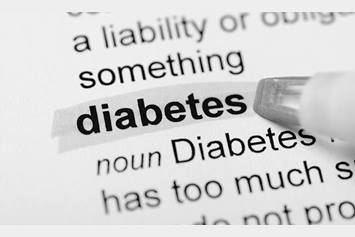Diabetes Ketoacidosis (DKA)
Diabetic ketoacidosis (DKA) is a serious problem that happens when your body doesn’t have enough insulin. This causes your blood to become too acidic. Symptoms include feeling very thirsty, peeing a lot, stomach pain, and fruity-smelling breath. DKA needs quick medical help to prevent serious health issues.
What Is Diabetic Ketoacidosis (DKA)?
Diabetic Ketoacidosis (KEY toe as i DOE sis), also known as DKA, is a serious complication of diabetes. When the cells in the body cannot use glucose for energy, there is a buildup of acids called “ketones” in the blood. For the cells to use glucose for energy both glucose and insulin need to be in the blood. Insulin acts like a key to unlock the cell door. It allows glucose in to be used for energy.
When cells do not have glucose to use for energy:
- The body starts to use fat for energy.
- Ketones are made when fat is used for energy.
- Ketones are present in the blood and in the urine.
- Ketones cause the blood to become more acidic.
- If untreated, this leads to DKA and life-threatening problems.
What Are the Causes of DKA?
- Not enough insulin
- Missing doses of insulin
- Infection, illness or injury (which causes the body to need more insulin)
- Insulin doses too small
- If using insulin pump, interruption in delivery of insulin
What Are Signs of DKA and When Should You Test for Ketones?
You may or may not feel any different when you begin to have ketones. The only way to know is by checking the urine or blood for the presence of ketones.
- Check for ketones if blood glucose is higher than 300 mg/dl.
- Check for ketones when ill (fever, flu or vomiting) even if blood glucose is not higher than 300 mg/dl.
Warning Signs of DKA
- Fast breathing
- Fruity smell to the breath
- Hard to wake up
- Feeling sick to the stomach (nausea), belly pain, or vomiting
How to Check Urine for Ketones
- Step 1: Check the expiration date on the bottle. Note that ketone strips expire 6 months after opening the bottle.
- Step 2: Collect urine in a cup. Dip the ketone strip into the cup. Remove it from the urine.
- Step 3: Wait 15 seconds.
- Step 4: Match the color on the keytone strip to the colors on the bottle.
- Step 5: Wash your hands. Record the test result, date and time in your log book.
You can also check blood for ketones. Your health care team can provide more information about this choice.
What to Do If Ketones Are Present
Taking action when ketones first appear can stop DKA from happening.
If ketones are small, moderate or large:
- Drink 1 cup (8 ounces) of fluids every 30 to 60 minutes.
- If blood glucose is higher than 150, drink something that does not have carbohydrates.
- If blood glucose is lower than 150, drink something that does have carbohydrates.
- Give extra rapid-acting insulin for ketones every 3 hours until ketones are negative. This is called a ketone bolus. If you are not sure how much extra insulin to give for the ketone bolus, contact your health care provider. Continue to check blood glucose and ketones every 3 hours.
- Follow sick day guidelines provided by your diabetes team or contact your diabetes health care provider for advice.
- Do not skip meals. Continue eating or drinking carbohydrates and take extra rapid-acting insulin with meals.
- Continue to take the same dose of long-acting Lantus insulin that you usually take.
- Do not exercise if ketones are present.
Being Prepared When Contacting a Health Provider
When you contact your child’s healthcare provider, have the following information ready:
- Child’s name and birthdate
- Last blood glucose reading
- Ketone results
- Current insulin doses and time last rapid-acting insulin dose given
- Your name and relationship to the child
When to Call the Doctor
- You have treated moderate to large ketones two times with rapid acting insulin and ketones are still moderate to large.
- You have treated a low blood glucose two times and it is still low.
- You have thrown up (vomited) three times within 2 hours.
- As instructed by your diabetes health care provider.
When to Go to the Emergency Department
DKA can be life-threatening. Go to the local emergency department if you have any of these alarming signs of DKA.
- Fast breathing
- Fruity smell to the breath
- Hard to wake up
- Vomiting for more than 2 hours
Helping Hands Patient Education Materials
Written and illustrated by medical, nursing and allied health professionals at Nationwide Children's Hospital, Helping Hand instructions are intended as a supplement to verbal instructions provided by a medical professional. The information is periodically reviewed and revised to reflect our current practice. However, Nationwide Children's Hospital is not responsible for any consequences resulting from the use or misuse of the information in the Helping Hands.
HH-I-23 | ©1980, revised 12/15, Nationwide Children’s Hospital



